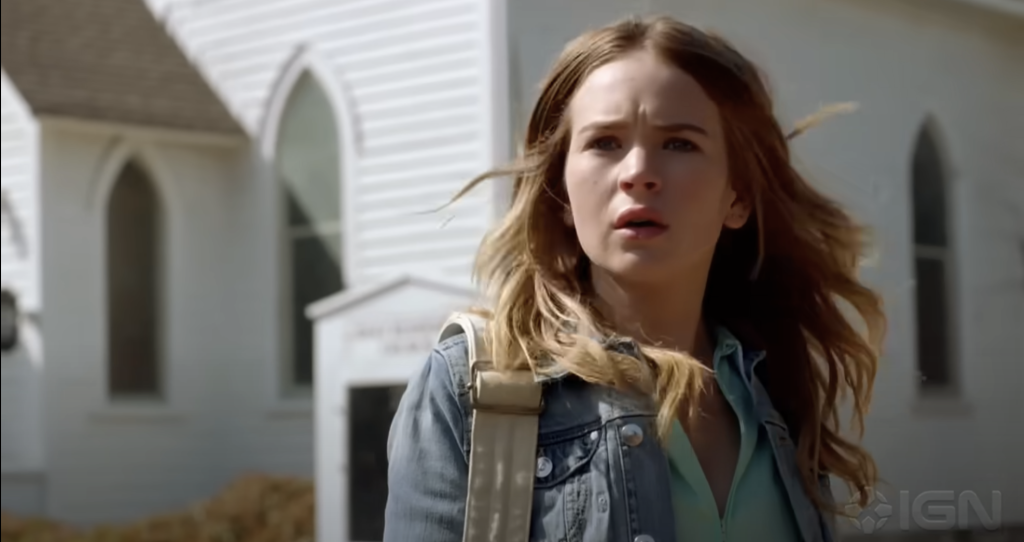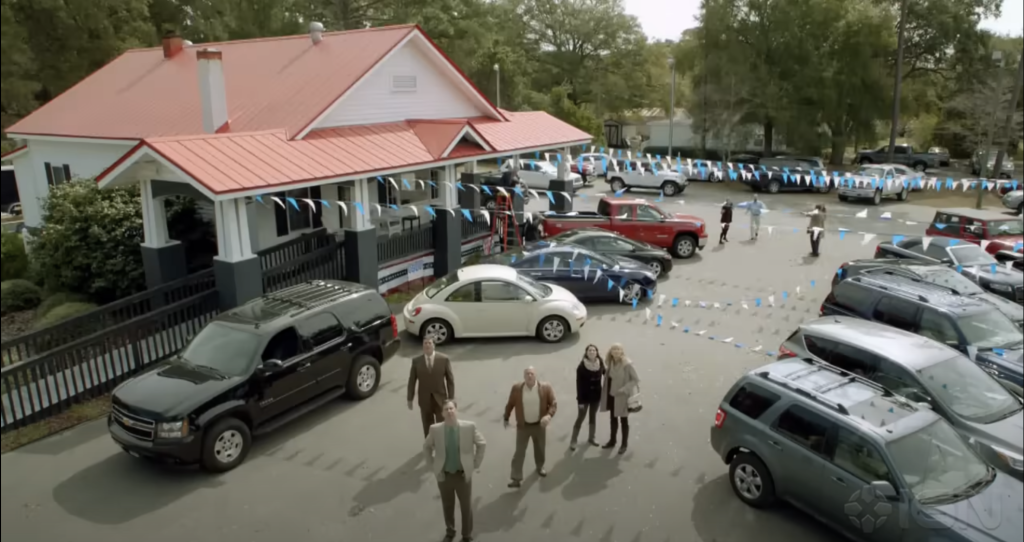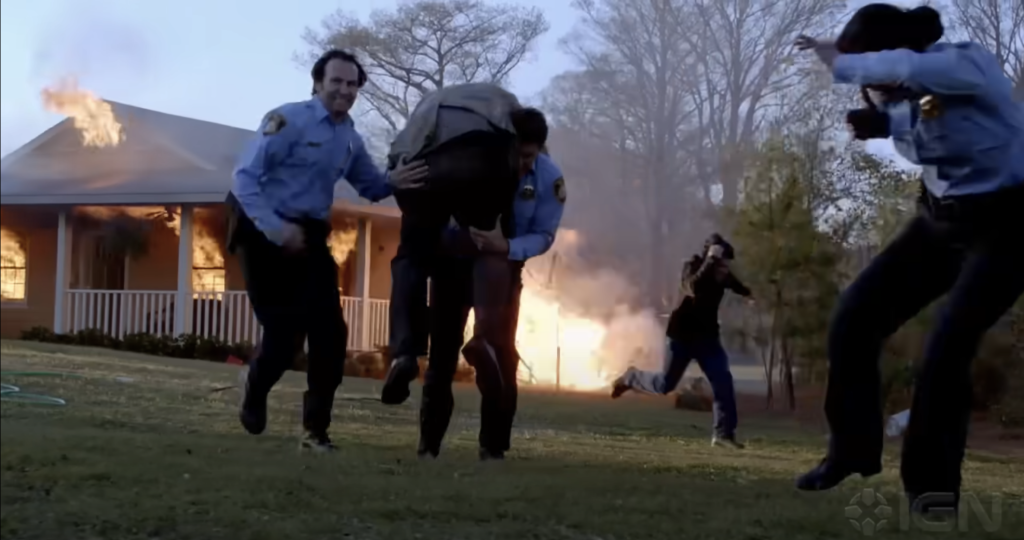The Fire: A Crucible of Character Under the Dome
In the second day of its inexplicable imprisonment, the town of Chester’s Mill is transformed into a crucible. The mysterious, invisible barrier is not just a physical prison; it is a psychological pressure cooker, stripping away the veneer of civility to reveal the true character of those trapped within. The episode “The Fire” is not merely about a house burning down; it is about the spark of chaos catching flame in a community, forcing its residents to confront who they truly are when the old rules no longer apply.

The Erosion of Order and the Seizing of Power
The fragile sense of authority in the town shatters with the death of Sheriff Duke Perkins, whose pacemaker explodes when he gets too close to the dome’s edge. His sudden demise creates a power vacuum, and into that void steps Councilman “Big Jim” Rennie. On the surface, he is a pillar of the community, distributing propane and offering words of comfort. However, beneath this facade lies a master manipulator. He and Reverend Coggins share a dark secret related to the town’s propane reserves, and they fear Duke may have kept incriminating records.

When Duke’s house catches fire—a fire secretly started by Coggins to destroy those records—Big Jim seizes the moment. With the town’s fire department trapped outside the dome, he organizes the citizens. In a grand, heroic gesture, he uses a bulldozer to tear down the burning house, preventing the fire from spreading and saving the neighborhood. He then positions himself before the grateful crowd as a reluctant but capable leader, a savior in their time of need. It is a chilling lesson in how a crisis can be exploited; while others see tragedy, the opportunist sees a ladder.

The Spirals of Fear and Paranoia
While Big Jim manipulates the town’s fear, others are consumed by it. His own son, Junior, descends further into a private madness. Convinced that the dome has “scrambled” Angie’s brain and driven her away from him, he holds her captive in his father’s bomb shelter. His paranoia fixates on “Barbie,” the stranger he saw Angie speak with. This jealousy fuels a violent confrontation where Junior attacks Barbie, only to be easily overpowered. He then returns to his captive, twisting the narrative by lying that he has killed his rival, believing that terror and isolation will make Angie love him again.
A more public descent is that of Deputy Paul, who becomes unhinged by the town’s predicament. He is convinced they are all doomed and that their leaders are lying to them. His fear metastasizes into reckless aggression. During the fire’s aftermath, his hysteria boils over. Believing the dome is the true enemy, he wildly fires his pistol at it, and in the ensuing chaos, a stray bullet strikes and kills fellow officer Freddy. This tragic event underscores the episode’s central theme: in a closed system, fear is as dangerous as any external threat. It turns neighbor against neighbor and transforms a protector into a killer.

The Pursuit of Truth and Glimmers of Heroism
Amidst the growing chaos, flickers of integrity and courage emerge. Julia Shumway, a reporter, refuses to let the town remain in ignorance. With the help of radio station engineers Dodee and Phil, she uses a homemade receiver to intercept military communications, learning that the military did not create the dome and has no idea what it is. She immediately goes on air to broadcast this terrifying truth, believing that knowledge, however frightening, is better than uncertainty.

Meanwhile, the enigmatic Barbie continues to prove himself an unlikely hero. Though he is an outsider with his own secrets, he is the one who devises the bucket brigade strategy at the fire. He acts decisively and rationally when others panic. Linda, thrust into the role of sheriff, struggles to maintain control but never wavers from her duty, rescuing the Reverend from the fire and trying to corral her increasingly unstable deputies. Together, they represent a different kind of response to the crisis—one based on responsibility, action, and truth rather than manipulation or fear.
The episode concludes not with a resolution, but with a deeper sense of dread. The fire has been extinguished, but the internal fires of paranoia, jealousy, and ambition have been stoked. The community proved it could work together to solve a problem, but the actions of individuals like Paul and Junior show how easily that unity can be shattered. “The Fire” serves as a powerful illustration that when society is trapped and its foundations are shaken, the greatest danger comes not from the prison walls, but from the darkness that lurks within the prisoners themselves.
